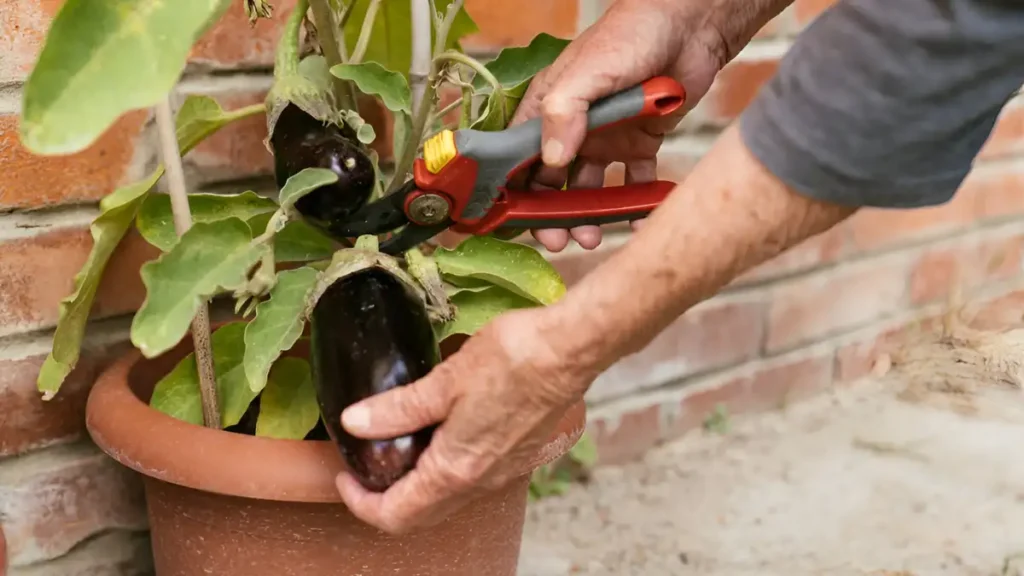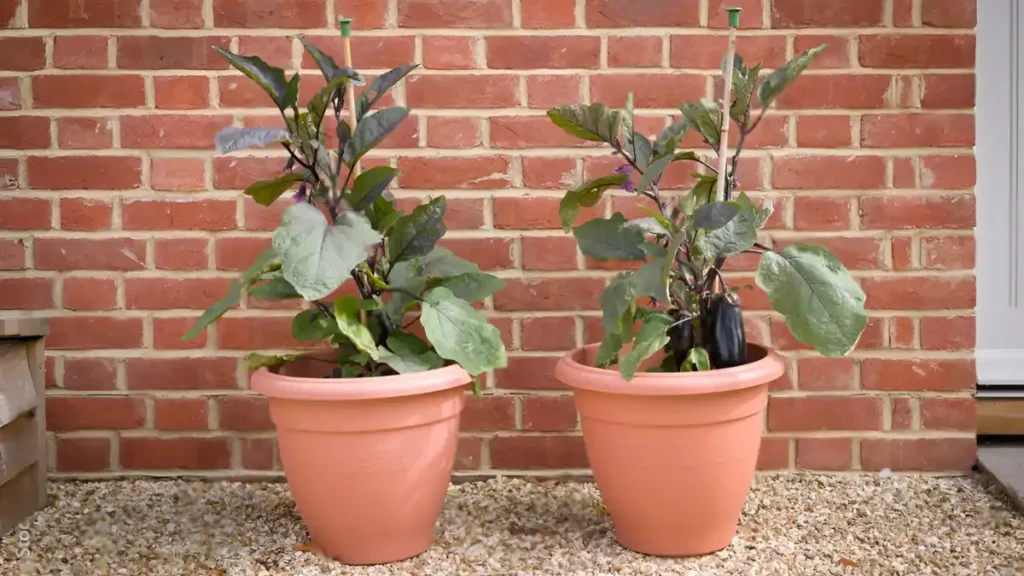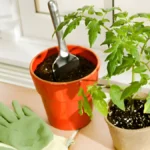Growing eggplant in pots is a rewarding way to enjoy fresh, homegrown produce even if you have limited space. Renowned for their intense flavor and adaptability in cooking, eggplants grow very well in pots, which makes them a perfect complement to your balcony garden. This project guarantees a plentiful crop and a fulfilling experience, regardless of your level of gardening expertise. Growing eggplants upside down is a quick, easy, and effective technique to make the most of available space. Are you itching to bring the vivid colors of thriving eggplants into your balcony? There’s nowhere else to look! We’ll reveal the keys to growing eggplant in pots successfully in this guide.
Tips for growing eggplant in pots:
Growing eggplant in pots is an excellent way to cultivate this delicious vegetable, especially if you’re working with limited space. Here’s a guide to help you get started:
- Select sizable pots that have a minimum depth of 12 inches and a minimum diameter of 12 to 16 inches. Because of their large root systems, eggplants require a lot of room to thrive.
- Employ soil that drains well and is high in organic materials. It is best to combine garden soil, compost, and either vermiculite or perlite. Avert thick or compacted soils as they could impede the growth of roots.
- Make sure your balcony gets six to eight hours of direct sunlight every day. The pots should be placed where they will receive plenty of sunlight.
- Eggplants require continuous moisture, so water them on a regular basis, keeping the soil evenly moist but not saturated. Use your finger to feel for moisture in the soil; if it feels dry about an inch below the surface, water.
- Because of their tendency to grow tall, eggplants may require support to keep from tumbling over. To give support for the plants as they grow, install trellises or stakes in the pots.
- When growing, feed your eggplants every two to three weeks with a balanced fertilizer. Slow-release granules or a liquid fertilizer can be added to the soil.

- Pruning eggplant plants on a regular basis will encourage bushier growth and better air circulation. To stop pests and illnesses from spreading, remove any leaves that are yellowing or infected.
- Be vigilant against common pests such as flea beetles, aphids, and spider mites, and diseases like bacterial wilt and powdery mildew. To manage pests, use neem oil or organic insecticidal soap; to avoid illness, maintain proper hygiene.
Conclusion:
In conclusion, home gardeners with limited space may find growing eggplant in pots to be a rewarding experience that produces tasty results, even though it does demand constant attention to detail and care. Growing eggplants in containers can be successful and yield a large crop if done correctly. By growing eggplant in pots, it’s easier for you to manage their surroundings and make sure they get the right quantity of sunlight, water, and nutrients. Moreover, this technique makes it simpler to control pests and gives you the freedom to relocate the plants to follow the sun or shield them from inclement weather.
Certainly! If you’d like to learn more, please consider following our WhatsApp Channel: Harvest Gardening.
A frequently asked questions:
Q1: What type of soil is best for growing eggplant in pots?
A1: Use a potting mix that drains well and is high in organic materials. A blend designed for veggies or tomatoes is effective. Steer clear of thick soils that can retain excessive amounts of moisture since this could cause root rot.
Q2: How do I start growing eggplant from seed?
A2: To begin, choose a potting mix that drains well and sow the eggplant seeds ¼ inch deep. Make sure the soil is regularly moist, and position the pot in a warm area with lots of sunlight.
Q3: When should I harvest my eggplants?
A3: For the finest flavor and texture, harvest eggplants when they are firm, glossy, and mature—typically 6–8 inches (15–20 cm) in length.



